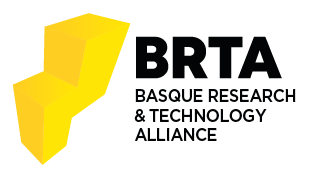AI-Driven Integration of Histological and Genomic Data for Understanding Breast Cancer Survival
Egileak: Guillermo De Celis Rodríguez María D. M. Vivanco
Data: 27.05.2024
Abstract
Breast cancer (BC) poses a significant threat to public health. Understanding its complex nature using high-dimensional data remains a challenge. Here, we explored the predictive capabilities of feature extraction algorithms on genomic and image data within the context of BC. Firstly, we trained AI models on the TCGA dataset to identify cancer signatures. Secondly, we evaluated the predictive power of these image and omics features using a survival framework on an independent dataset (METABRIC). The genomic models achieved AUC values of 0.99 (expression), 0.78 (SNPs), and 0.72 (CNVs). The image segmentation model distinguished histological structures with a dice score of 0.63. Finally, survival models showed significant associations between BC and features such as image-derived cell stroma % (p=0.002) and genetic-derived CNV status (p=4.34×10-4). Our study highlights the capabilities of AI to capture relevant features in high-dimensional data, enhancing BC survival predictions.
BIB_text
title = {AI-Driven Integration of Histological and Genomic Data for Understanding Breast Cancer Survival},
keywds = {
breast cancer; genomics; histological image; image segmentation; Survival model
}
abstract = {
Breast cancer (BC) poses a significant threat to public health. Understanding its complex nature using high-dimensional data remains a challenge. Here, we explored the predictive capabilities of feature extraction algorithms on genomic and image data within the context of BC. Firstly, we trained AI models on the TCGA dataset to identify cancer signatures. Secondly, we evaluated the predictive power of these image and omics features using a survival framework on an independent dataset (METABRIC). The genomic models achieved AUC values of 0.99 (expression), 0.78 (SNPs), and 0.72 (CNVs). The image segmentation model distinguished histological structures with a dice score of 0.63. Finally, survival models showed significant associations between BC and features such as image-derived cell stroma % (p=0.002) and genetic-derived CNV status (p=4.34×10-4). Our study highlights the capabilities of AI to capture relevant features in high-dimensional data, enhancing BC survival predictions.
}
isbn = {979-835031333-8},
date = {2024-05-27},
}







